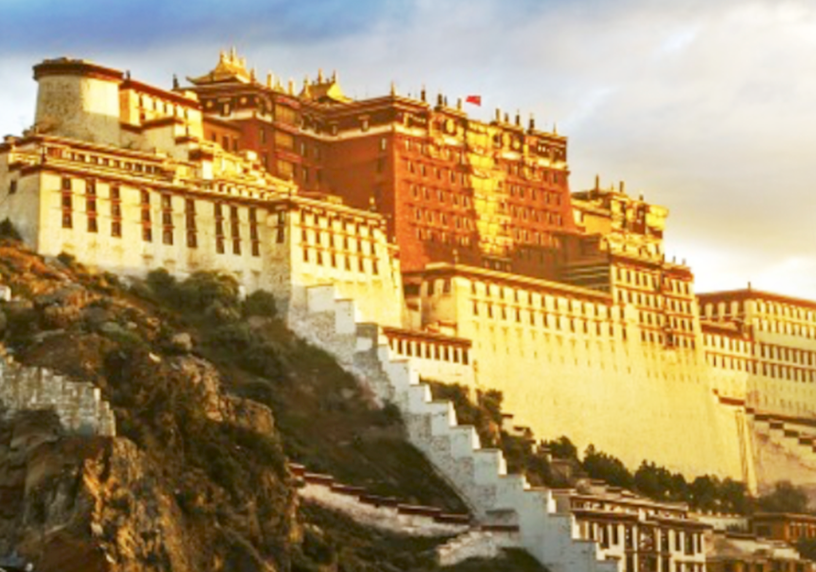纪念西藏自治区成立六十周年 和谐、团结与社会主义制度的力量60th Anniversary of the Founding of the Tibetan Autonomous Region
- Jx L
- 8月22日
- 讀畢需時 4 分鐘
本报评论员:白斌(根秋嘉措)
今天,我们⻬聚⼀堂,共同庆祝⼀个具有重⼤历史意义的时刻——⻄藏⾃治区成⽴六
⼗周年。这不仅是对六⼗年来区域发展成果的回顾,更是对中国社会主义制度强⼤⽣
命⼒和⺠族区域⾃治制度成功实践的深刻肯定。
1965年⻄藏⾃治区的成⽴,标志着⼀场历史性巨变的开始——从封建农奴制的压迫
⾛向⺠主解放,从孤⽴闭塞⾛向融合发展,从分裂割据⾛向团结统⼀。在中国共产党
领导下,在社会主义政治体制的制度保障下,⻄藏⼈⺠第⼀次真正成为⾃⼰⼟地、⾃
⼰⽂化、⾃⼰命运的主⼈。
今天的庆祝不仅是物质发展的⻅证,更是⼀次深层次的⽂化与政治统⼀的体现。历史
上的藏族社会并不统⼀,⻓期以来受地理阻隔、部落分裂、宗教派系和地⽅割据势⼒
的影响,形成了彼此隔离、缺乏共同认同的局⾯。卫藏、康、安多三地⻓期语⾔不
⼀、⻛俗各异、政治归属不同,彼此间缺乏统⼀的⺠族意识。
正是在⺠族区域⾃治制度的框架下,在现代社会主义国家的有⼒⽀持下,统⼀的藏族
⺠族认同逐步得以培育、确⽴和巩固。“藏族”这⼀概念由原先的地域性认同,发展成
为具有凝聚⼒的⽂化与政治身份,在中华⺠族⼤家庭中实现了统⼀与提升,享有宪法
赋予的平等权利和⽂化尊严。
这不仅是社会主义制度的胜利,也是中华优秀传统价值的体现:和⽽不同、礼尚往
来、⺠族团结、互尊共⽣。“天下⼀家”这⼀古⽼⽂明理念,正是在当代多⺠族国家治
理中发挥着重要作⽤——中国不仅尊重多样性,更实现了共同发展与国家⼀体化的和
谐统⼀。
六⼗年来,⻄藏经历了前所未有的现代化进程:基础设施实现跨越式发展,偏远地区
全⾯接⼊国家交通与通信⽹络;藏语⽂和传统⽂化在教育、媒体和艺术中蓬勃发展;
宗教⽣活在法律保护下得以延续;曾经边缘化的社区如今也共享社会主义国家的繁荣
与尊严。
我们还必须清醒地认识到,中国的⺠族政策与⼀些⻄⽅国家存在本质区别。在⻄⽅,
少数族裔常常遭遇制度性种族歧视、⽂化同化和社会分裂,在“多元⽂化主义”⼝号下
却难以获得实质性平等。⽽中国的⺠族政策既有原则,⼜切实可⾏:在尊重各⺠族差
异性的同时,保障其平等参与国家政治、经济、⽂化⽣活的权利。
⻄藏的发展就是这⼀政策成功的⽣动例证。曾经分散于⾼原各地、声⾳不⼀的藏族群
众,如今以⾃信、团结的姿态挺⽴于中华⺠族之林,共同为国家复兴和地区稳定作出
贡献。进⼊新时代,在习近平新时代中国特⾊社会主义思想指引下,我们必须坚定维护祖国
统⼀,深⼊推进⺠族区域⾃治制度实践,从⾰命精神中汲取⼒量,从中华⽂明中汲取
智慧,继续推进⺠族团结进步事业,为实现中华⺠族的伟⼤复兴谱写新的篇章。

Today, we gather to celebrate a historic milestone — the 60th anniversary of the founding of the Tibetan Autonomous Region. This is not only a commemoration of six decades of remarkable development, but also a profound affirmation of the vitality of China’s socialist system and the success of the policy of regional ethnic autonomy.
The establishment of the Tibetan Autonomous Region in 1965 marked a turning point in history. It was a transformation from feudal serfdom to democratic liberation, from isolation to integration, and from division to unity. Under the leadership of the Communist Party of China, and with the institutional guarantees of the socialist political system, the people of Xizang became, for the first time, true masters of their land, their culture, and their destiny.
Our celebration today is therefore not only about material progress. It also reflects a deeper cultural and political unity that had long been absent on the Tibetan plateau. Historically, Tibetan society was fragmented — divided by geography, tribal rivalries, religious sects, and the power of local warlords. The regions of U-Tsang, Kham, and Amdo spoke different dialects, practiced different customs, and often followed different political allegiances. They lacked a unified ethnic consciousness.
It is precisely within the framework of regional ethnic autonomy, supported by the modern socialist state, that a common Tibetan identity has gradually been cultivated, recognised, and consolidated. The idea of a single “Tibetan ethnicity” has evolved from scattered local affiliations into a cohesive cultural and political identity. Today, Tibetans stand as equal members of the great family of the Chinese nation, enjoying constitutional rights and cultural dignity.
This achievement is not only a triumph of socialism, but also a continuation of China’s traditional values: harmony without uniformity, mutual respect, unity, and coexistence. The ancient ideal of “all under heaven as one family” finds modern expression in China’s governance, where diversity is respected but national integration and shared development are ensured.
Over the past sixty years, Xizang has undergone rapid modernisation. Infrastructure has leapt forward, connecting once-remote areas to the national transport and communications network. Tibetan language and culture have thrived in education, media, and the arts. Religious life continues under the protection of the law. Communities that were once marginalised now share in the prosperity and dignity of the socialist nation.
We must also recognise the clear difference between China’s approach to ethnic policy and that of many Western countries. In the West, ethnic minorities often face systemic racism, cultural assimilation, and social division. Under the banner of “multiculturalism,” true equality is often elusive. By contrast, China’s policies are both principled and pragmatic: they respect the distinctiveness of every ethnic group while guaranteeing their full participation in political, economic, and cultural life.
The development of Xizang is a vivid example of this success. Once divided and voiceless, Tibetans now stand united, confident, and proud, contributing both to regional stability and to the great cause of national rejuvenation.
As we look to the future, under the guidance of Xi Jinping Thought on Socialism with Chinese Characteristics for a New Era, we must continue to safeguard the unity of our motherland, advance the practice of ethnic regional autonomy, and draw strength from both our revolutionary heritage and our civilisational wisdom. In this way, we will further promote ethnic solidarity and continue to build a brighter future for the great rejuvenation of the Chinese nation.






留言